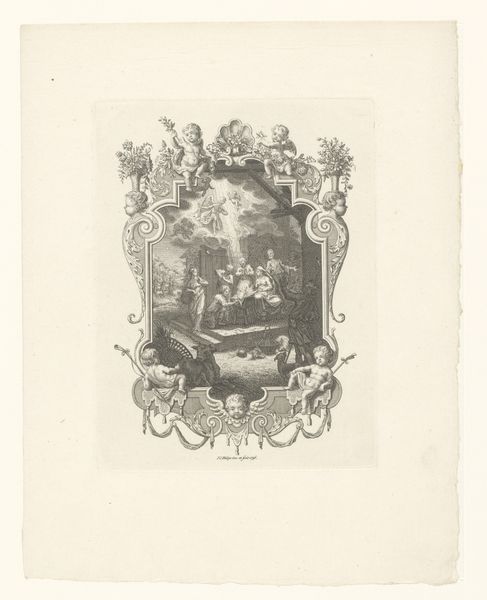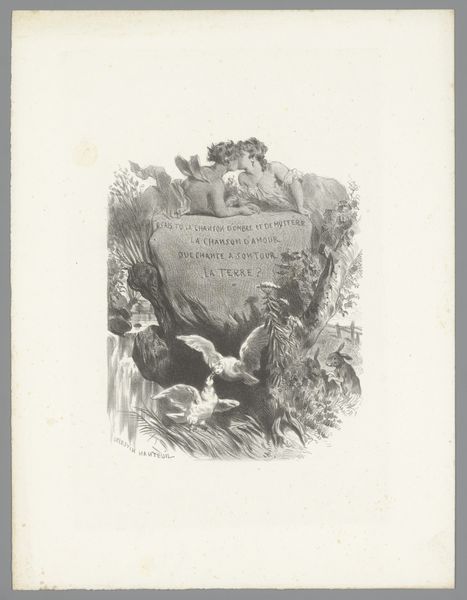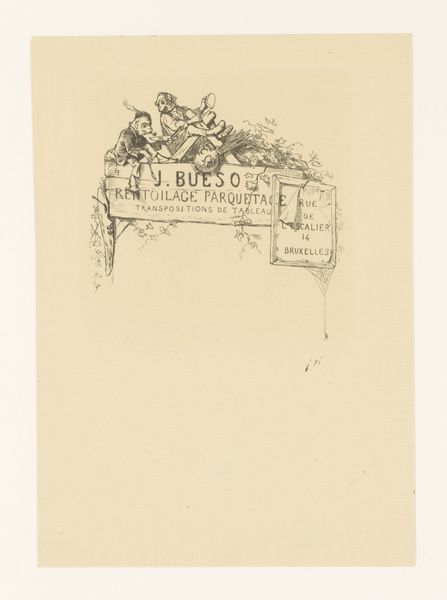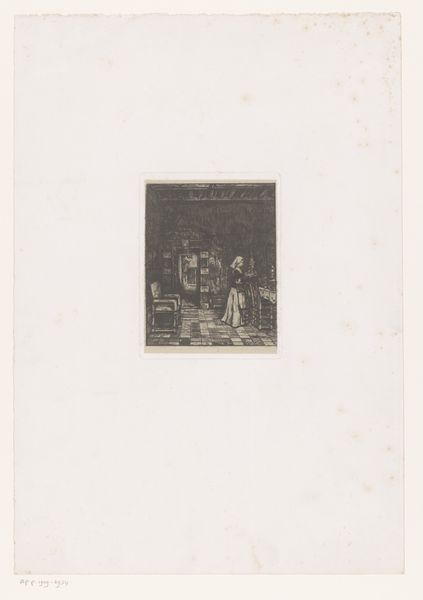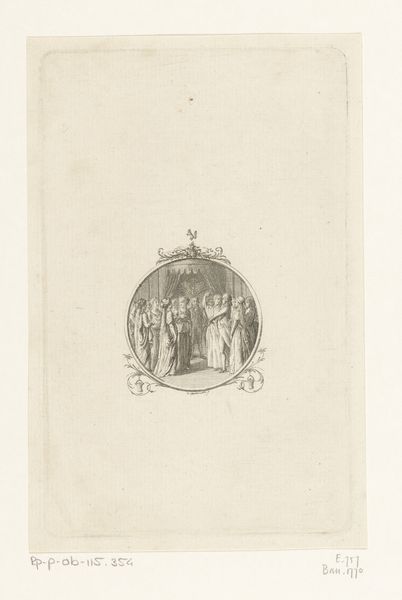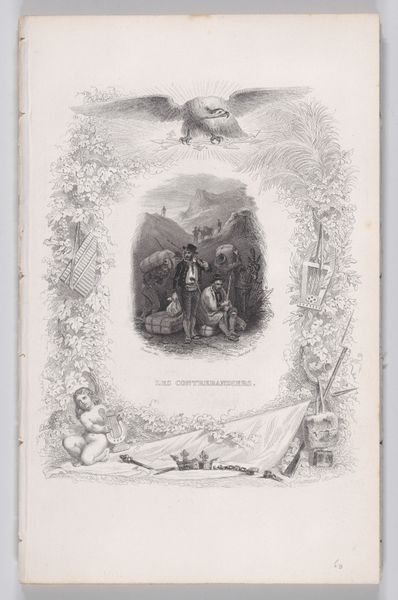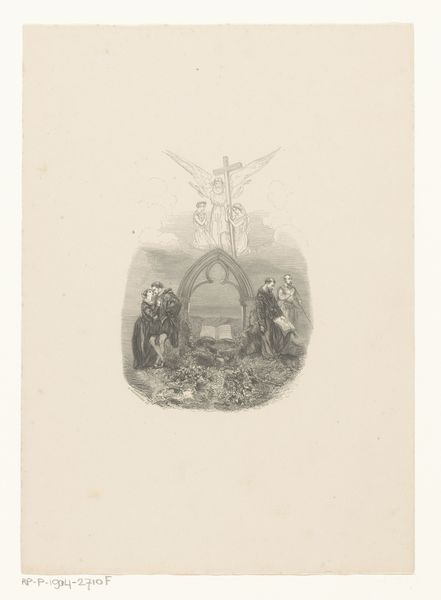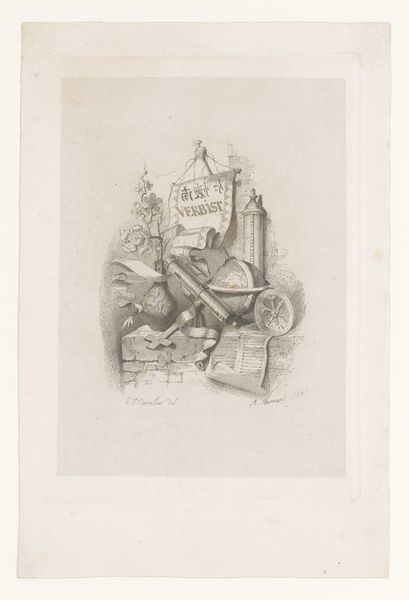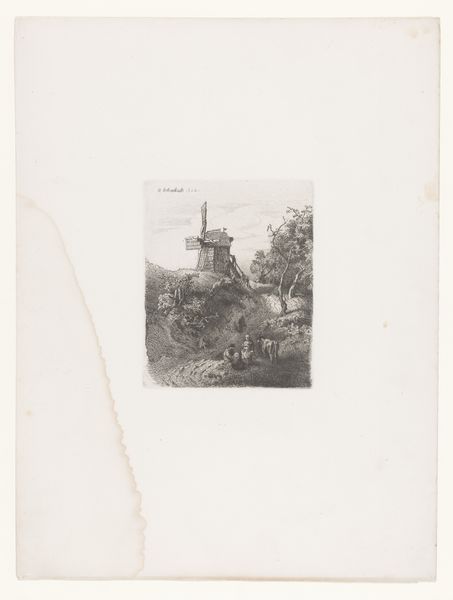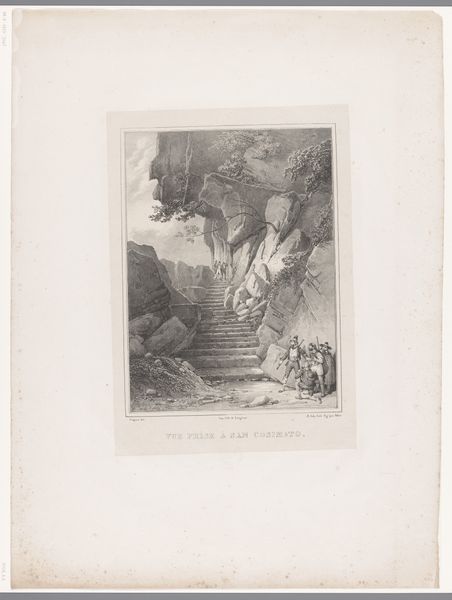
print, engraving
#
pencil drawn
#
narrative-art
# print
#
pencil sketch
#
old engraving style
#
figuration
#
romanticism
#
genre-painting
#
engraving
Dimensions: height 179 mm, width 139 mm
Copyright: Rijks Museum: Open Domain
Curator: So, looking at this intriguing print, it immediately strikes me with its divided reality. The piece, entitled "Man in deuropening met bovenaan vrouw tussen fantasietakken", created between 1841 and 1842 by Charles Jacque, showcases a scene with a man inside what looks like a simple dwelling, with a woman presented in the upper section surrounded by fantastic foliage. What impressions does it spark in you? Editor: The immediate feel is strangely theatrical, Curator. The dramatic light and shadow almost demand a tragic love story. Do you feel the duality, that sense of two worlds, a grounded labor against perhaps ethereal love or a romanticized ideal? It’s as if two disparate plays are unfolding on one stage, intertwined but forever separate. Curator: I concur, the stark contrast and separation pique my curiosity. The engraving technique certainly contributes to that dramatic feel. This Romantic era artwork captures something between raw labor, hinted at with the figure working at some form of a desk in his home, juxtaposed with idyllic grace, and romantic ideals represented by the woman within nature's embrace. One is framed in darkness, the other, illuminated with light! Editor: The use of symbolism here feels quite direct. Consider the dwelling – a closed, confined space – suggesting perhaps the confines of earthly existence or social class, which traps our male subject. Contrast this with the fluid and abundant setting of the woman; nature provides boundless freedom, imagination. Perhaps Charles Jacque explores the era's conflict between realism and the longings for escape found in romanticism, no? Curator: It definitely seems that way. Moreover, note that these visual elements serve as social commentary: it underscores that stark divisions of labor and societal standing often leave dreams unrealized; for a select few, however, life and social order may provide a more elevated sense of existence and liberation. One feels almost as though it represents a stage. Editor: A stage for the heart's aspirations versus societal limitations, captured in print form, offering multiple layers for consideration in how dreams and boundaries interact and often stand in opposition of one another. Curator: Precisely. I love how this initially unassuming image unfolds to present more potent reflections on yearning and social reality. Editor: Agreed; this work speaks to a constant interplay of the tangible and the intangible and how visual representation captures them both so skillfully, across the chasm of the 19th century into the present day.
Comments
No comments
Be the first to comment and join the conversation on the ultimate creative platform.
